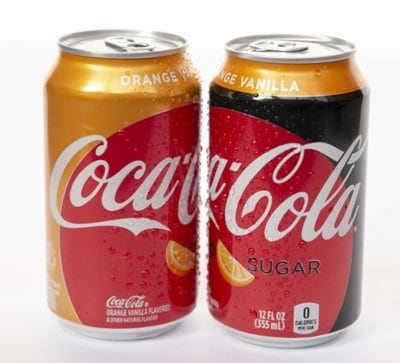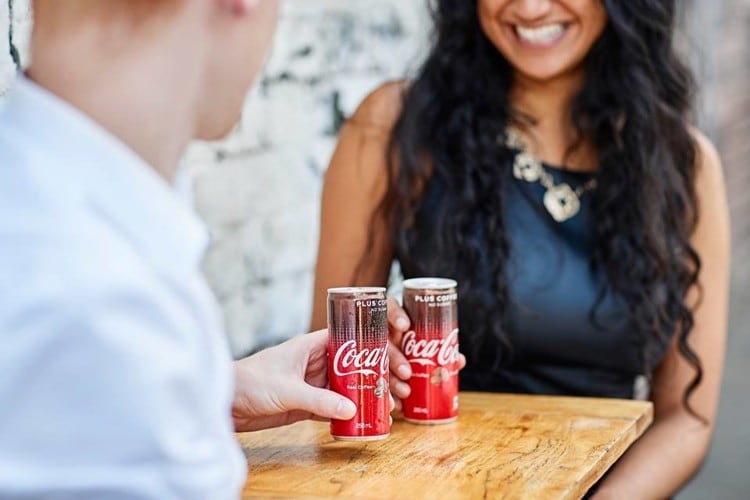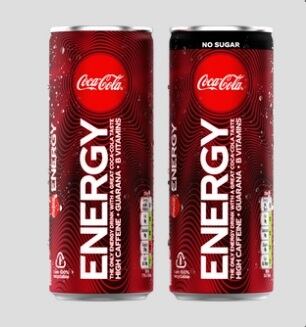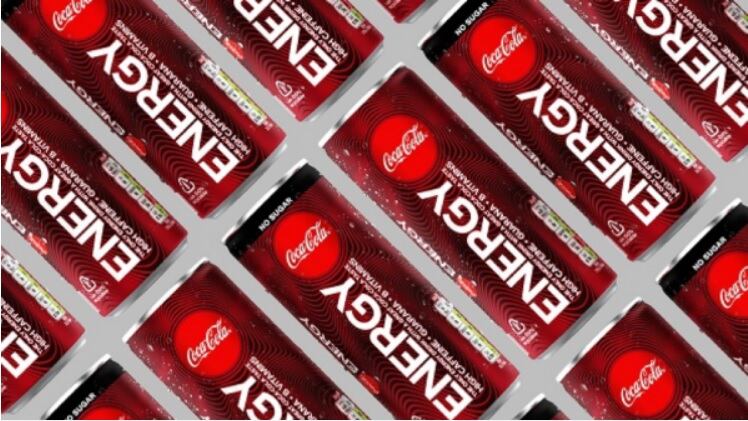Over the past years and decades Coca-Cola has innovated around its flagship Coke: with new flavors (cherry, orange vanilla, and ginger to name a few) and sugar-reduced varieties (Diet Coke, Coca-Cola Zero Sugar and Coca-Cola Life).
But the next generation of Coke is taking a much more ambitious leap: bounding into the on-trend categories of energy and coffee.
Coca-Cola Coffee has already been tested in several Asian markets with expansion to 25 global markets planned for 2019; while Coca-Cola Energy recently launched in Ireland and the UK.
Energy emphasis: Coca-Cola, Coffee, and Energy Drinks
With a backlash against soda and sugary drinks, big brands like Coca-Cola have had their work cut out to reimagine and reposition themselves in a new market reality.
James Quincey, CEO, Coca-Cola, says that regular updates to the flagship Coke brand have helped maintain its relevance and momentum in the marketplace.
The brand saw 6% growth in global retail value in 2018, attributed largely to the success of Coke Zero Sugar (the brand’s calorie and sugar-free update on Coca-Cola Zero, which has been rolling out globally over the last two years).
“Coke Zero Sugar succeeds because it builds on the brand edge of original Coke, on its taste, its upliftment, on the energy boost that the product provides, all this in a product that doesn't have calories or sugar,” says Quincey.
Additional flavors – such as the recent launch of orange vanilla Coke – have helped keep up brand momentum.

But Quincey says its future plans for Coke are much more ambitious: as categories blur and the soft drinks giant builds its presence in new categories.
“You’ll see us to continue to innovate to capture additional consumption occasions and needs.
"One example is Coca-Cola Coffee which we tested in several Asian markets last year. Coke Coffee was designed to reach consumers during specific occasions and channels like the mid-afternoon energy slump at work. We've learned from these pilots and we now plan to launch in more than 25 markets around the world by year end.
“We're also pursuing another logical extension on the Coca-Cola brand with our test of Coke Energy. This takes one of the original brand edges of Coke, its energy boost, to a new level and a new taste. This product is designed to the white spaces where the energy category isn't well-developed.”
Wake up and smell the Coca-Cola Coffee
Coca-Cola has been testing coffee Coca-Cola in Asia and Australia. Coca-Cola Plus Coffee (along with a sugar-free variant) in Japan and Australia uses Brazilian coffee beans for ‘the unmistakable aroma of real coffee’, while the drink has less caffeine than a regular cup of coffee but slightly more than a regular Coke.
Meanwhile Coca-Cola Batch Blends launched in Australia as a drink with 35mg of caffeine per 250ml, compared to 24mg in regular Coke.
“The way we are seeing the opportunities for innovation in a product sense is - in a way - at the blurring edge or partly at the blurring edge with some of the categories,” explains Quincey.

“So the opportunity to have a Coke and coffee variant of Coca-Cola is really at that juncture of what are the benefits that people see in Coke; versus what are the benefits they look for in coffee. Especially perhaps in some of the markets where the occasions are less well-developed.
“Said another way, in the developed economies, three-quarters of what people drink is already a commercial beverage. So they have a certain view as to what drinks go for what and what occasions.
“But in the emerging economies only a quarter of what they drink is a commercial beverage. So there's still a lot of in a way creating of the occasions and connecting of brands and benefits to certain occasions. There’s opportunities to expand categories and to leverage the blurring of the edges.
“And I think Coke Coffee is a great example of that: started out in Southeast Asia in that afternoon slump, and really married the benefits of Coke with coffee in a very unique way.”
On trend: Energy
Coca-Cola Energy – the first energy drink released under the Coca-Cola brand - has hit shelves in Ireland and the UK this month with both sugar and no sugar variants.
Coca-Cola Energy contains caffeine from naturally-derived sources, guarana extracts and B vitamins, and is free from taurine.

Again, Coke Energy is another classic example of category blurring in action, says Quincey.
“With every category, there’s a central proposition that everyone understands the category to be, and then – at the boundary of the category – people have made innovations by adding other ingredients and starting to connect to benefits from other categories,” he said.
“In the case of the energy category, there’s been a lot of growth in the central core of what the category stands for and that's what's propelled the category forward, largely in North America and Europe and a few other parts of the world. The energy category in itself is still in development in many emerging markets,” said Quincey.
“And, therefore, there's an opportunity in complement to the core brands within the energy category, to work at the boundary. And Coke Energy is based on that dynamic.
“It's got the credentials and some of the origins to be able to connect to some of the energy need states. So we see that as a space where the energy category can grow. And we see that across our whole series of geographies. And we're going to experiment with Coke Energy and see how it works and then, obviously, refine the proposition.”
But will Coke still be Coke?
The danger with myriad innovations is that Coke risks cannibalisation of its flagship brand; or blurs the very identity of brand Coke.
But Quincey is clear that the new innovations are additions to the brand: rather than an attempt to redefine the core proposition. And the new innovations are still essentially trials that Coca-Cola will monitor carefully as they develop.
'In the end, what we have to steward is the vibrancy of the total brand'
“I think there's a difference between what's central to the brand; and what are innovations that are likely to be non-core to the identity or the most central part of the brand,” said Quincey.
“And so I would see brand Coke and what it stands for, and therefore Coke Zero Sugar, as a key part of what the Coca-Cola brand is.
“Now things like coffee - that's at the beginning, and we'll see how that develops. Clearly, that's a product variant that's crossing over into another category with coffee. And obviously, there is a danger there that it starts to change the nature of Coke itself.”
In terms of flavors, variants are often different between markets and time will tell which ones generate interest and a connection to the brand and which ones don’t, said Quincey.
“In the end, what we have to steward is the vibrancy of the total brand,” he said.

